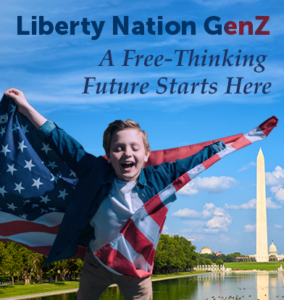In the fog of war, battle plans are famously discarded when the first shot is fired, and decisions are made in an instant. No time to think through the consequences or ponder the larger questions. Aim, fire, and ask questions later.
Such is where America figuratively stands, as more and more jobs — livelihoods even — have simply vanished into the vapors of an unforeseen and unparalleled crisis. A national slowdown, threatening to morph into a shutdown across the land amid predictions of millions of lost jobs, is coming dangerously close to destroying an economy that was the envy of the world just a few short weeks ago.
On the other hand is an equally profound truth: While an economy can be resuscitated, expired lives cannot.
The Value of a Life
A spring of contentment beckoned. But now is the unfolding spring of our national discontent. Can we really have reached the point of debating whether saving lives that may or may not be imperiled are worth the price of extreme caution? Maybe not at the moment, but rest assured that, absent a deadlier outbreak we have yet to experience, this hardest of all questions will soon be debated far and wide, from the corridors of Congress to homes across the land.
How can we place a price tag on a life? Well, believe it or not, the federal government does so routinely, employing what are called value-of-statistical-life measures. They are used to calculate the collective and per capita costs and benefits of various health and environmental regulations.
Now, consider this assessment of the effects of the Coronavirus on the U.S. economy from W. Kip Viscusi, a Vanderbilt University professor and widely acknowledged expert in such measurements. He “estimates the value of a statistical life at around $10 million. That means an American community of 100,000 people would on average pay $100 per person to reduce the risk that one person in the community would randomly be killed by some threat. The community is now essentially paying $10 million to reduce the risk that one among it will die.” So that means we are paying literally 100,000 times as much to protect ourselves and our neighbors at this time as we do during normal times.
Drawing the Line
Predictions by accredited health experts of as many as two million deaths, and, from respected economics experts, forecasts of a recession worse than 2008 and more than 20% unemployment, will soon force President Trump to decide where to draw the line.
And the president acknowledged as much in a message on Twitter March 23 that may change the temperature on the crisis and signal a significant change of direction. Referring to his guidelines on extreme physical distancing and other measures announced to the nation on March 16, the president tweeted, “We cannot let the cure be worse than the problem itself. At the end of the 15-day period, we will make a decision as to which way we want to go.”
At least when the great recession hit in 2008, politicians and financial institutions could focus like a laser beam on fixing the economy alone. The only health they considered was the financial health of companies and investors who took it on the chin. This time, the crisis is infinitely more complicated because of the comingling of actual health of millions of people and the economy on which they depend and the seeming impossibility of finding solutions that offer the right and happy medium between them.
Put simply, would we prefer to save the lives of an unknown number of potential victims of COVID-19, at the cost of an economy buried deeper in recession or even depression?
You want easy answers? There are few in these times, because we face issues we rarely if ever had to address. But the indescribably delicate matter of the physical versus financial health of 327 million people is one we will surely look back upon in wonderment, asking ourselves how it ever came to this in the first place.
~
Read more from Tim Donner.
For home study students and young people, Liberty Nation recommends…
American Health Care
High School: Free Health Care: What Is It, and Is It Good for America?
Middle School: Free Health Care: What Is It?
Elementary School: What is Health Care?
All About Coronavirus
High School: Coronavirus: What It Is and How Not to Get It
Middle School: Coronavirus: Just the Facts
Elementary School: Coronavirus: What Is It?
Watch Now
Video: Soapbox Sanctuary – Health Care: A Right or a Privilege?




